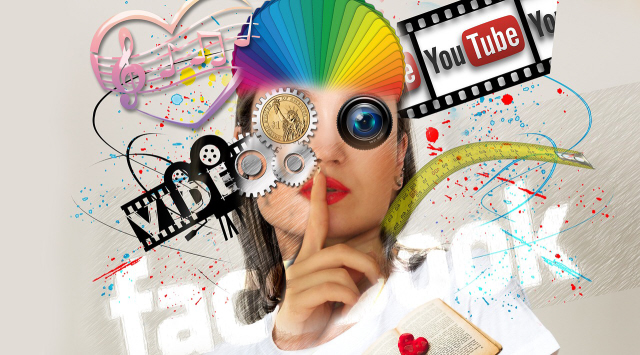When starting a new Social Media account, one of the first things you should consider is the images that you would like to use. A growing number of customers will check social media accounts before visiting websites, and so your social media profile page will be, for many people, the very first impression of your company that they get. It is crucial to choose images that reflect your business: who you are, what you stand for, and how you go about your business. Are you serious, professional, and business like; or jovial, lighthearted, and cheerful? Whichever end of the spectrum you place yourself, it is important to consider what your profile and cover images say about you as a business.

Social Media Image Sizes
Regardless of how impressive your graphic may be, incorrect sizing will always look scruffy and unprofessional. No customer will be impressed by stretched, squeezed, or clipped images, and so before creating your graphic you should check to make sure that you are creating it at the correct size and resolution.
| Profile Photo | Cover Photo | |
| 180 x 180 | 820 x 312 | |
| 400 x 400 | 1500 x 500 | |
| LinkedIn (Profile) | 400 x 400 | 1400 x 425 |
| LinkedIn (Company) | 400 x 400 | 646 x 220 |
| Google + | 250 x 250 | 1080 x 608 |
| YouTube | 250 x 250 | 2560 x 1440 |
Social Media Image Sizes
Facebook’s exponential growth to the UK’s second most popular website (behind only Google) shows no sign of stopping, and with good reason. The company have perfected the art of staying relevant whilst maintaining the ease of use and simplicity that users from all demographics can use equally. Whilst profile pictures have been a staple of users’ profiles from the very beginning, it was with the introduction of cover photo’s to the site that in 2011 that gave people the opportunity to truly express who they – or their business – were. The large, high quality image that sits behind the profile picture gives ample room to show the world who you are, far more so than the profile picture, which should be used as an instantly recognisable icon for your Facebook presence. The optimum size for Facebook pictures is 180 x 180 pixels for a profile picture, and 828 x 315 for a cover photo.
Similar to Facebook, Twitter allows users to upload both a profile picture and a cover photo. Once again, it is important that both are used to maximise your companies’ impact. Twitter users are notorious for having a short attention span, and your cover and profile photos can make or break a potential customers’ impression of you and your business, and whether or not they will choose to follow you. The optimum size for Twitter pictures is 400 x 400 pixels for a profile picture, and 1500 x 500 for a cover photo.
On LinkedIn, the cover photo works slightly differently from how it is used on Facebook and Twitter. Instead of simply being a bigger image at the top of your profile, your cover photo on LinkedIn is instead a background, extending around your profile page in all directions. For this reason, it is considered more aesthetically pleasing in most cases to use slightly more abstract pictures. This is because the vast majority of the picture will be obscured by your profile, so any graphic where the focus is on the middle of the image is a no-no. The background image is large enough that it can set an atmosphere for your profile, as well as adding that crucial personal touch – despite LinkedIn being a primarily professional medium. You can contrast the personality you show in your profile with a smart, professional profile photograph. Unlike the other Social Media websites, Profile pictures on LinkedIn should always be headshots.
As well as your personal account, LinkedIn now also allows users to upload cover-style images to their company page. Unlike personal pages, company cover photos are not obscured and so can be anything you like. They should, however, remain professional. Many businesses choose to use their company cover photo as a chance to show a photograph of their staff, office, or perhaps the main product that they produce.
Google + and YouTube
Across Google+ and YouTube, your profile picture remains the same. What separates these two from your other Social Media accounts is that Google uses a circle to frame your picture, which can present challenges for those with non-headshot profile pictures. However, a simple portrait should fit just as well into a 250 x 250 circle as it does a square.
Where the two differ, however, is the cover photos. Google+ accepts a 1080 x 608 image, part of which is duplicated and then frosted, before being placed underneath your profile information. On mobile, only the raw image will be displayed.
Because it is displayed on devices of all different sizes, YouTube have a fairly complicated sizing guide for their cover photo. They ask for a 2560 x 1440 image, the entirety of which is displayed on SmartTVs. However, only a small portion of this is displayed on desktop, and an even smaller part of that is shown on mobile. It is therefore important to ensure that all of the important parts of your graphic fit within a tight 1540 x 427 rectangle to be visible across all devices.